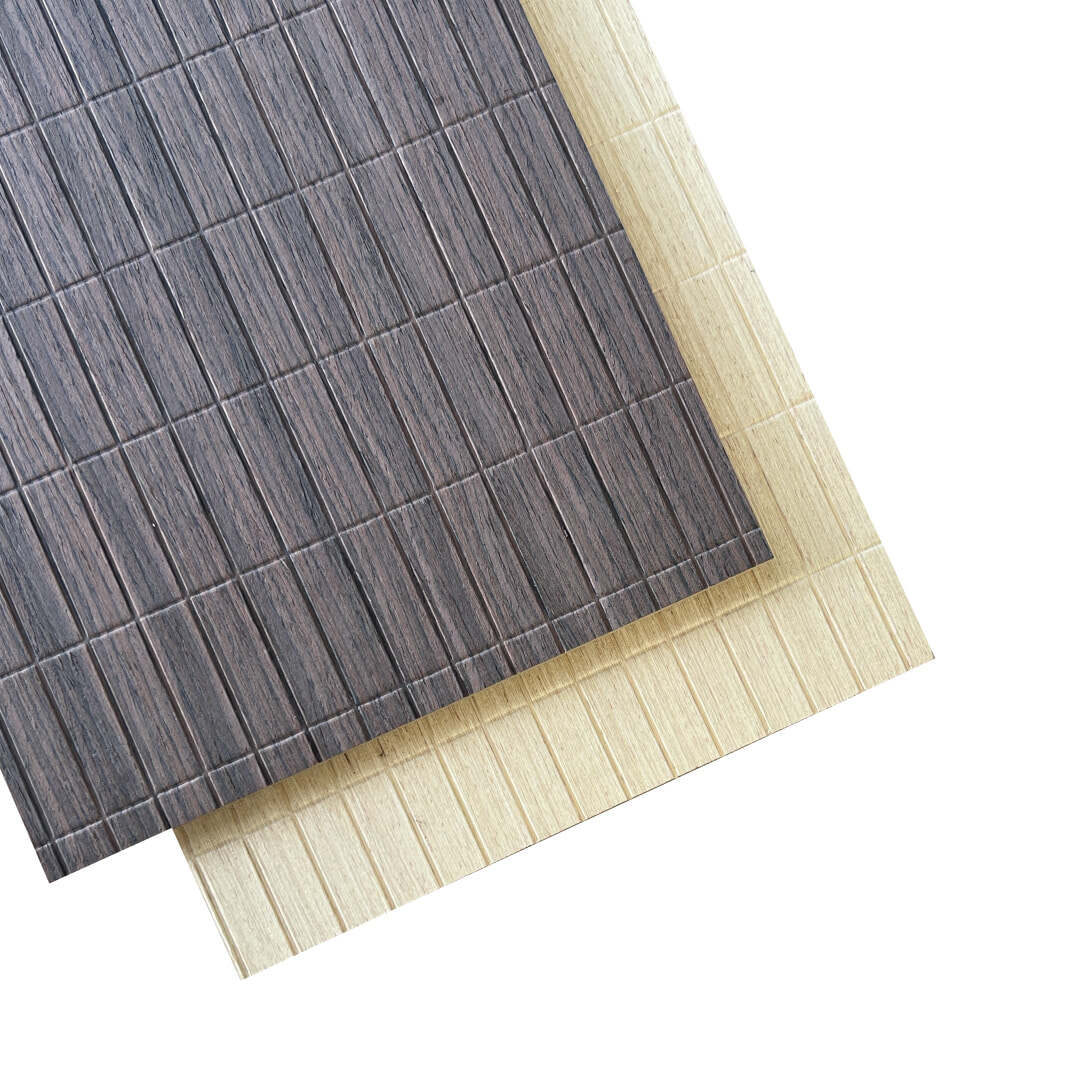Sound quality plays a crucial role in creating comfortable and functional environments, whether in professional recording studios, home theaters, offices, or residential spaces. Acoustic panels have emerged as an essential solution for controlling unwanted noise, reducing echo, and enhancing overall audio clarity. These specialized sound treatment products offer both aesthetic appeal and functional benefits, making them increasingly popular among architects, interior designers, and property owners who prioritize acoustic comfort.

The science behind effective sound management involves understanding how sound waves interact with different surfaces and materials. When sound waves encounter hard surfaces like concrete walls, glass windows, or tile floors, they bounce back and create unwanted reflections that can distort audio quality. This phenomenon becomes particularly problematic in larger spaces or rooms with minimal soft furnishings, where sound waves continue to reflect and create an unpleasant acoustic environment.
Modern sound treatment solutions address these challenges through carefully engineered materials and designs that absorb, diffuse, or redirect sound energy. The strategic placement of these materials can dramatically transform the acoustic characteristics of any space, making conversations clearer, music more enjoyable, and overall noise levels more manageable. Understanding these principles helps property owners make informed decisions about their acoustic treatment needs.
Understanding Sound Absorption Technology
Material Science Behind Sound Control
The effectiveness of sound absorption materials depends largely on their internal structure and density characteristics. Porous materials work by converting sound energy into small amounts of heat through friction as air molecules move through tiny openings within the material. This process effectively removes sound energy from the environment rather than simply reflecting it back into the room.
Different materials exhibit varying absorption coefficients across different frequency ranges. Low-frequency sounds, such as bass notes or traffic noise, require thicker and denser materials for effective absorption, while high-frequency sounds can be controlled with thinner, less dense materials. This frequency-dependent behavior explains why professional acoustic panels often feature multiple layers or specialized internal structures designed to target specific frequency ranges.
Performance Metrics and Standards
Noise Reduction Coefficient values provide standardized measurements for comparing the sound absorption performance of different materials. These coefficients range from zero, indicating no absorption, to one, representing complete absorption of incident sound energy. Most commercial sound treatment products display NRC ratings to help consumers understand their expected performance levels.
Sound Transmission Class ratings measure how well materials prevent sound from passing through walls or barriers. While absorption and transmission control serve different purposes, understanding both metrics helps create comprehensive acoustic solutions. Professional acoustic consultants often combine materials with different performance characteristics to achieve optimal results for specific applications.
Design Integration and Aesthetic Considerations
Architectural Integration Strategies
Modern sound treatment products have evolved far beyond purely functional designs to include aesthetically pleasing options that complement contemporary interior design themes. Manufacturers now offer panels in various colors, textures, and patterns that can enhance rather than detract from a room's visual appeal. This evolution has made acoustic treatment more accessible to residential users who previously avoided such products due to their industrial appearance.
Successful integration requires careful consideration of existing design elements, color schemes, and architectural features. Panels can be arranged in geometric patterns, used as accent walls, or integrated with lighting systems to create visually striking installations. Some products feature customizable fabric covers or printed graphics that allow for complete design flexibility while maintaining acoustic performance.
Space Planning and Coverage Calculations
Determining the appropriate amount of sound treatment for a given space involves calculating the room's total surface area and considering the existing materials and furnishings. Generally, treating between fifteen and thirty percent of wall surface area provides noticeable acoustic improvements for most applications. However, specific requirements vary based on the room's intended use, shape, and existing acoustic characteristics.
Strategic placement of acoustic panels often proves more important than total coverage area. Focusing treatment on primary reflection points, such as the walls adjacent to speakers or the wall behind a listening position, can provide significant improvements with minimal material investment. Professional acoustic analysis can identify these critical zones and optimize treatment placement for maximum effectiveness.
Installation Methods and Best Practices
Mounting Systems and Hardware
Proper installation ensures both optimal acoustic performance and long-term durability of sound treatment systems. Various mounting options accommodate different wall types, panel weights, and aesthetic preferences. Adhesive mounting provides clean installations for lightweight panels, while mechanical fasteners offer greater security for heavier products or high-traffic environments.
Standoff mounting systems create air gaps between panels and walls, which can enhance low-frequency absorption performance. These systems also facilitate future repositioning or removal without wall damage. Professional installers often recommend standoff systems for permanent installations where maximum performance is required.
Maintenance and Longevity Considerations
Quality sound treatment products require minimal maintenance when properly installed and used within their design parameters. Regular dusting or vacuuming helps maintain appearance and prevents accumulation of particles that might affect acoustic performance. Some fabric-covered panels allow for cover removal and cleaning, extending product lifespan and maintaining hygiene standards in commercial applications.
Environmental factors such as humidity, temperature fluctuations, and exposure to direct sunlight can affect material performance over time. Selecting products appropriate for specific environmental conditions and following manufacturer guidelines helps ensure long-term satisfaction and performance stability. Many professional-grade products include warranties that reflect their expected service life under normal operating conditions.
Application-Specific Solutions
Home Theater and Entertainment Spaces
Home entertainment environments present unique acoustic challenges that require carefully balanced solutions. Excessive sound absorption can make spaces feel dead and unnatural, while insufficient treatment allows unwanted reflections and resonances that degrade audio quality. Achieving the optimal balance requires understanding the specific acoustic signature desired for different types of content.
Movie watching typically benefits from controlled reflections that create spatial impressions and surround sound effects, while music listening often requires more neutral acoustic environments. Adjustable or modular treatment systems allow homeowners to modify their room's acoustic characteristics based on current usage. Some advanced systems incorporate electronically controlled elements that can adapt automatically to different content types.
Commercial and Office Applications
Workplace acoustic comfort directly impacts productivity, concentration, and employee satisfaction. Open office environments particularly benefit from strategic sound treatment that reduces noise distractions while maintaining communication clarity. Modern office acoustic panels often integrate with ceiling systems, partition walls, and furniture to create cohesive solutions that support various work activities.
Meeting rooms and conference facilities require acoustic treatment that ensures speech intelligibility for both in-person and remote participants. Video conferencing technology performs better in acoustically controlled environments where background noise is minimized and speech clarity is optimized. Professional-grade treatments for these applications often include specialized products designed specifically for voice communication enhancement.
Frequently Asked Questions
How much acoustic treatment do I need for my room
The amount of acoustic treatment required depends on your room size, intended use, and existing furnishings. As a general guideline, treating fifteen to thirty percent of wall surface area provides noticeable improvements for most spaces. Rooms used for critical listening or recording may require more extensive treatment, while casual listening spaces often need less. Consider starting with treatment at primary reflection points and adding more coverage based on results.
Can acoustic panels completely eliminate noise problems
Acoustic panels primarily address sound reflections and reverberation within a room rather than blocking sound transmission between spaces. While they significantly improve audio quality and reduce echo, they cannot completely eliminate external noise sources or prevent sound from traveling through walls. For comprehensive noise control, combine absorption panels with sound blocking materials and address potential sound leakage paths.
Do acoustic panels work for low frequency sounds like bass
Standard thickness acoustic panels provide limited effectiveness for very low frequencies, which require specialized treatments such as bass traps or thicker absorption materials. However, most panels effectively control mid and high frequency reflections, which significantly improves overall sound clarity. For rooms where bass control is critical, consider dedicated low-frequency treatments in addition to standard wall panels.
How long do acoustic panels maintain their effectiveness
Quality acoustic panels typically maintain their performance characteristics for many years when properly installed and maintained. The internal absorption materials are generally stable and do not degrade significantly under normal environmental conditions. Fabric covers may show wear or fading over time, but this rarely affects acoustic performance. Most manufacturers provide warranties reflecting expected service life, typically ranging from five to fifteen years depending on product quality and application conditions.



